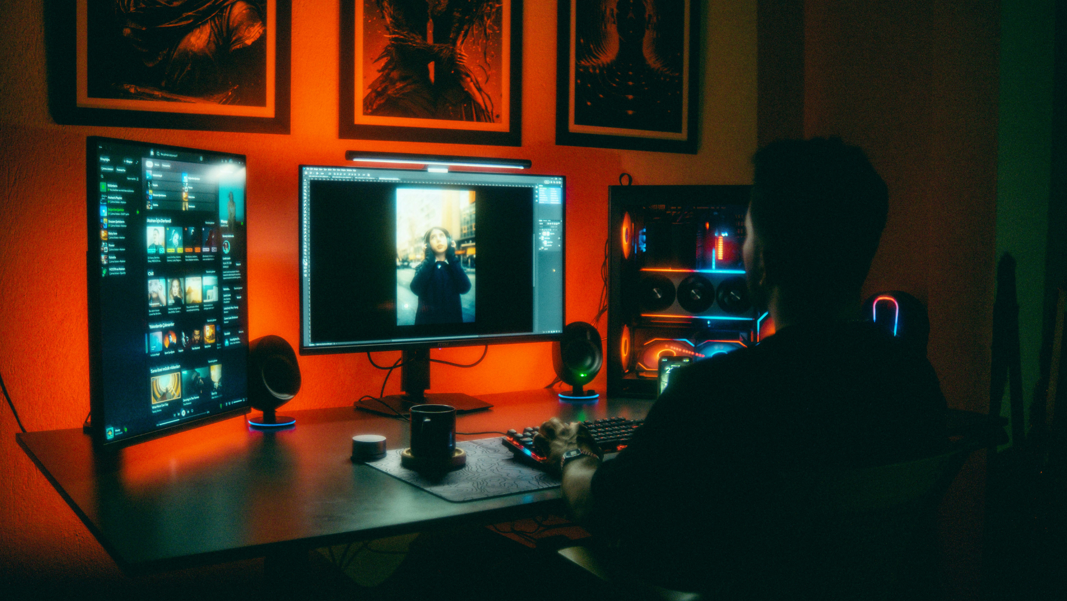How Marketing Agencies Are Revolutionizing Video Creation with AI
Artificial intelligence isn’t replacing creativity, it’s redefining it. Across the industry, marketing agencies are using AI to rethink how they generate ideas, produce videos, and deliver content faster, without sacrificing storytelling.
It’s not about replacing editors, creatives, or producers. It’s about removing the friction between concept and creation. With AI, agencies are unlocking workflows that are more efficient, more strategic, and more deeply connected to audience behavior than ever before.
Let’s explore how this revolution is changing everything from ideation to post-production, and why the smartest agencies are using AI as a creative amplifier, not a shortcut.
From Production Bottlenecks to Creative Flow
Ask any creative director and they’ll tell you: production timelines can kill inspiration. Between multiple client demands, endless edit rounds, and fast-changing social media trends, even the most talented teams hit a wall.
AI is helping agencies remove that wall. By automating tedious processes like cutting footage, syncing audio, or analyzing performance, agencies free up mental space for what truly matters, storytelling, brand voice, and emotional connection.
That’s the foundation of modern creative flow: letting machines handle the logistics while humans handle the art.
(We explore this in more depth in “How AI Is Reshaping Creative Workflows for Marketing Agencies.”)
AI as the New Creative Partner
The fear that AI will “replace creatives” misunderstands what’s actually happening. AI isn’t a threat to human imagination, it’s a collaborator that expands it.
Imagine a brainstorming session where AI identifies trending formats, suggests fresh visual tones, or highlights emotional themes that align with a brand’s message. Creative teams still make the decisions, but with far richer data and more inspiration on hand.
Agencies that embrace AI as a creative partner see faster idea generation, stronger campaign concepts, and less time lost to “blank page syndrome.”
(We go deeper into that process in “How AI Helps Agencies Generate Video Ideas Faster.”)
Smarter Post-Production and Editing
Editing used to be one of the most time-consuming parts of video creation. Now, AI is cutting that down drastically, not by replacing editors, but by empowering them.
With AI tools that can automatically sort footage, detect emotional moments, or fine-tune pacing, editors are spending less time on manual tasks and more time shaping the narrative.
Some tools even analyze viewer engagement data to suggest which scenes will hold attention longest. That combination of data and direction is giving agencies unprecedented creative precision.
(Learn more about how editors are using AI effectively in “The Role of AI in Professional Video Editing for Marketing Agencies.”)
Data-Driven Storytelling
Storytelling and data used to live in separate rooms. AI has brought them together. Agencies now use AI to evaluate which storytelling techniques, pacing, tone, length, or emotion, perform best across platforms.
This insight doesn’t limit creativity; it guides it. When you know which stories resonate with different audience segments, you can tell those stories more powerfully.
One agency, for example, used AI-driven sentiment analysis to learn that their client’s audience responded more strongly to “everyday hero” narratives than to corporate case studies. The result? Higher engagement and a more relatable brand presence.
(We cover this strategic shift in “How Agencies Use AI to Analyze Video Performance and Audience Behavior.”)
Balancing Automation and Authenticity
Let’s be honest: not all AI-generated content feels authentic. That’s why great agencies focus on balance, automation for efficiency, and humans for emotional resonance.
AI can help you identify when audiences drop off or which shots create impact, but it can’t replicate the feeling behind a story. The agencies thriving in this new landscape are the ones using AI to elevate their work, not mass-produce it.
They’re blending technology with artistry, and redefining what creative quality looks like in the process.
(We explore this philosophy in “Balancing Automation and Creativity in AI-Powered Video Production.”)
Personalization at Scale
In a world where attention is currency, personalization has become the new creative advantage. AI allows agencies to tailor video content for different audience segments, without quadrupling production costs.
For example, an agency can create one master video and use AI to automatically produce different versions: one optimized for LinkedIn professionals, another for Instagram reels, and another for YouTube pre-rolls.
That kind of precision used to be impossible on tight timelines. Now it’s the standard for agencies that want to reach multiple audiences efficiently.
(We expand on this concept in “How AI Enables Personalized Video Content for Different Audiences.”)
Collaborative AI Tools Are Changing Team Dynamics
Beyond creative efficiency, AI is transforming how teams work together. Project managers now use intelligent tools to automate feedback cycles, flag potential delays, and allocate editors based on workload.
For global agencies, AI tools also bridge time zones, suggesting updates in real time and even transcribing meetings for asynchronous collaboration. The result is less chaos, more clarity, and smoother communication between creative, client, and strategy teams.
(We explain this transformation in “How AI Is Reshaping Creative Workflows for Marketing Agencies.”)
The New Creative Workflow: Art + Intelligence
Here’s what a future-ready agency workflow looks like:
- AI helps analyze audience trends before creative briefs begin.
- Creatives use AI-powered ideation tools to generate new video concepts.
- Editors use AI to optimize storytelling structure and visual rhythm.
- Strategists use AI analytics to refine content after launch.
Every part of the process becomes more connected, more intentional, and more measurable.
This doesn’t mean creativity is automated, it means creativity is informed.
(For a closer look at how human intuition and AI work together, read “The Future of Human–AI Collaboration in Creative Video Work.”)
Why Agencies Still Need Human Expertise
Despite all the buzz, AI alone doesn’t deliver great content, people do. Even the smartest algorithm can’t sense the nuance of humor, the rhythm of a story, or the emotional pull that makes someone stop scrolling.
That’s where real creative direction comes in. AI provides options; professionals provide context. AI speeds up editing; experts craft the emotion. The magic happens when agencies find that perfect partnership.
(We talk about this creative synergy in “How AI Enhances Storytelling and Visual Narratives in Video Production.”)
AI as the Foundation of Future Growth
Looking ahead, the agencies that succeed won’t just be the most creative, they’ll be the most adaptive. AI is giving smaller teams enterprise-level capabilities and helping larger agencies move with startup speed.
The agencies embracing this evolution now are already outpacing competitors, not because they have better tools, but because they understand how to use those tools strategically.
(We’ll explore the most impactful tech shaping this shift in “The AI Tools Transforming Video Marketing Agencies in 2026.”)
Final Thoughts
AI is no longer optional in creative video production, it’s the new baseline for innovation. But technology alone doesn’t make great work. The agencies that stand out will be the ones that combine intelligence with instinct, automation with artistry, and precision with heart.
If your marketing agency is ready to elevate its creative process with the power of AI, without losing the human touch, schedule a call with us. Let’s build the kind of storytelling that machines can’t replicate, but can help you deliver faster than ever.
.png)
.png)







